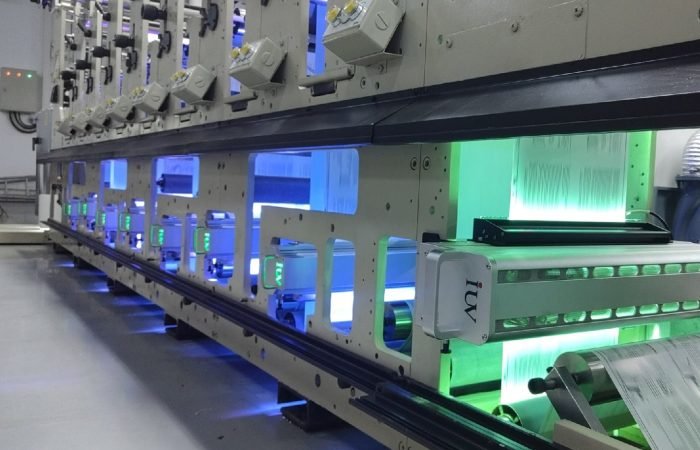The printing industry’s shift toward sustainable, high-efficiency technologies has put LED UV and traditional mercury arc UV curing systems in direct competition. For professionals in label, flexo, offset, and narrow-web printing, understanding these technologies isn’t just technical nitpicking—it’s about profitability, quality, and environmental impact. Let’s dissect both systems across critical parameters.
1. Energy Efficiency: The Operating Cost War
LED UV systems consume 60–70% less energy than mercury arc lamps. Traditional UV relies on mercury vapor bulbs that run hot 24/7, even during idle periods. LED units activate only when needed, slashing power bills. For a mid-sized label press operating 12 hours daily, switching to LED can save ~$15,000 annually.
Mercury arc’s inefficiency isn’t just about watts. Up to 40% of its energy output is wasted as heat, forcing shops to invest in HVAC systems. LED emits minimal heat, reducing cooling costs and preventing substrate distortion—a game-changer for thin film labels and heat-sensitive flexible packaging.
2. Speed vs. Stability: Curing Performance
Mercury arc lamps take 5–15 minutes to warm up and require intensity stabilization. LED UV achieves full-intensity curing in milliseconds. For high-speed narrow-web presses running 200 meters/minute, this instant-on capability eliminates job delays.
But raw speed isn’t everything. Mercury arc’s broader spectral output (200–450 nm) handles thicker coatings and opaque inks better. LED’s narrow peak (365–405 nm) demands precise photoinitiator matching. Advances in LED-compatible chemistries now bridge this gap, with hybrid formulations enabling deep curing for screen-printed textures or embossed effects.
3. Print Quality: Dot Gain, Color Gamut, and Detail
In offset and flexo printing, LED UV’s instant curing minimizes dot gain by freezing ink before it spreads. Tests show 12–18% reduction in dot gain compared to mercury systems, critical for fine text on pharmaceutical labels or micro-graphics on electronics packaging.
Mercury arc’s infrared heat can dry substrates prematurely, affecting ink adhesion. LED’s cold curing preserves paper’s natural texture—a selling point for premium wine labels or cosmetic packaging. However, some metallic inks still perform better under mercury’s broader UV spectrum.
4. Environmental and Safety Factors
Mercury arc lamps contain 50–100 mg of toxic mercury per bulb. Disposal requires hazardous waste protocols, with EPA fines up to $75,000 for non-compliance. LED contains no mercury and lasts 20,000 hours vs. mercury bulbs’ 1,000–1,500 hours.
VOC emissions also differ. While both systems cure without solvents, mercury lamps’ ozone generation requires ventilation. LED produces negligible ozone, improving workplace air quality—a key OSHA compliance factor.
5. ROI Analysis: Upfront Costs vs. Long-Term Gains
A mercury arc system costs $20,000–$50,000 less upfront. But factor in:
- $8,000/year saved on energy (LED)
- $2,500/year saved on bulb replacements
- $3,000/year lower HVAC costs
- 15% faster job turnover
Most shops recoup LED investments within 18–24 months. For specialty printers running low-mix/high-variety jobs, the quick curing also reduces WIP inventory by 30–40%.
Application-Specific Breakdown
- Label Printing: LED dominates with cold cure preventing PET/PVC label warping.
- Flexo: LED enables finer anilox rolls (1000 LPI) without ink skinning.
- Offset: Combines with waterless plates for sharper halftones.
- Narrow-Web: Enables inline foiling/embossing with instant curing between stations.
The Verdict
While mercury arc still holds niche roles in thick-film applications, LED UV is the undisputed future for most commercial print scenarios. As photoinitiator technology evolves, even remaining gaps will close. For printers eyeing sustainability mandates (like EU’s Eco-Management 2025) or competing in premium packaging markets, delaying the LED transition risks obsolescence.
The question isn’t if to switch, but how to phase legacy systems. Start with a hybrid setup: Use LED for base colors and mercury for specialty inks. Monitor ink/coating suppliers’ LED R












